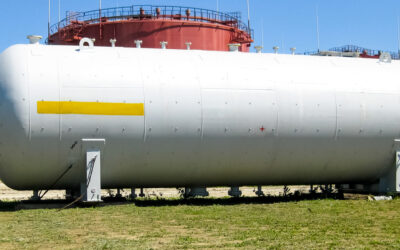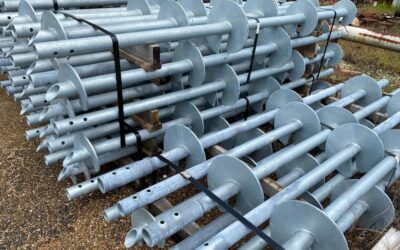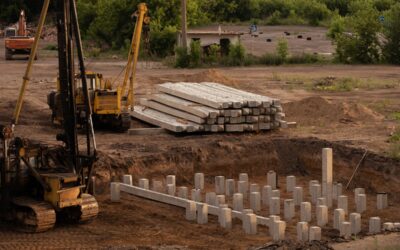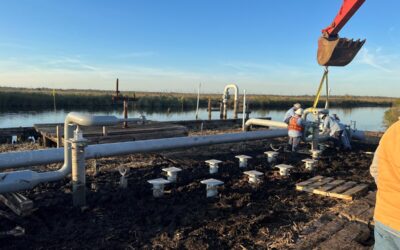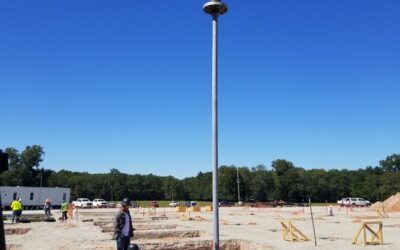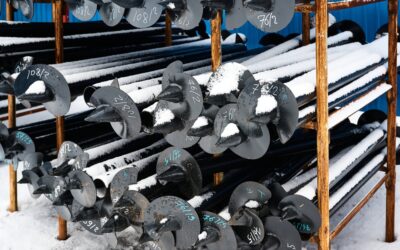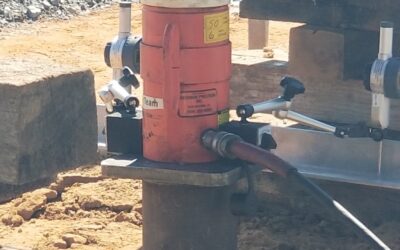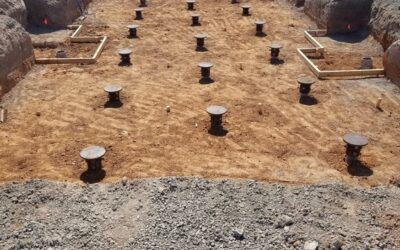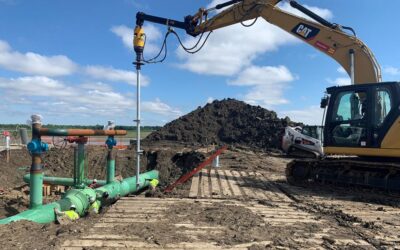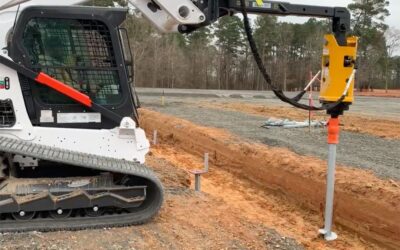Helical Pile Solutions Blog
A Guide To Maintaining Your Helical Pile Foundation
Helical piles have become a go-to solution for residential, commercial, and industrial projects. Known for their quick installation, minimal site disruption, and impressive load-bearing capabilities, they offer a reliable alternative to traditional deep foundation...
Helical Piles for Petrochemical Sump and Pipe Installation
Petrochemical facilities operate in some of the most demanding environments in the industrial sector. From corrosive materials to heavy dynamic loads and strict safety regulations, every element—especially the foundation — must be engineered for long-term...
How 3 New Pile Driving Techniques Are Changing the Industry
From hydraulic hammers to laser-guided systems, many exciting innovations are transforming pile driving. These advancements are setting new industry standards by reducing project timelines, minimizing environmental impact, enhancing worker safety, and more. At Elite...
Static vs. Dynamic Helical Pile Load Testing
Helical pile load testing is a vital step in ensuring the success of any construction project. Whether for industrial facilities, oil and gas infrastructure, commercial developments, or transmission and distribution networks, it ensures that every pile delivers the...
The 4 Most Used Deep Foundation Types
In large-scale and industrial construction projects, choosing the right foundation is critical to ensuring structural integrity, safety, and longevity. Among these, deep foundations are commonly used when the upper layers of soil are not strong enough to support the...
Helical Piles for Pipeline Anchoring
Pipelines are foundational to the oil and gas industry, facilitating the efficient and safe transportation of essential resources from production sites to refineries and distribution centers. However, these critical infrastructures can face obstacles such as soil...
Helical Piles vs Driven Piles
Foundation systems are the backbone of any construction project, ensuring that buildings will stand securely. Helical piles and driven piles both provide structural support for construction projects by transferring structural loads to deeper and stable soil layers. To...
Mastering Helical Piles: Solutions for Challenging Soil Conditions
Helical piles have a rich history dating back to the 1830s. Originally designed for mooring and lighthouses, these deep foundation elements have evolved into modern engineering marvels. Comprised of a central shaft adorned with one or more helix-shaped plates, helical...
Unlocking Construction Costs: Factors Influencing the Cost of Helical Piles
Helical piles have become a cornerstone in modern construction for industrial projects and are highly favored for their ease of installation and minimal environmental impact. Uncover the driving forces behind helical pile costs and explore how investing in them can...
How Deep Can Helical Piles Go? & Other FAQs
Helical piles, also known as screw piles, are innovative foundation solutions that have gained popularity in construction and engineering projects. These versatile piles offer several advantages, such as ease of installation, minimal environmental impact, and high...
Can Helical Piles Be Used For Bridge Foundations?
Bridges are crucial in connecting communities, facilitating transportation, and supporting economic development. The success and longevity of these vital structures heavily depend on the type of foundation chosen during construction. Among the various options...
What Is Underpinning? How It Works & When You Need It
In the world of large industrial structures, the stability and safety of the building are of utmost importance. When existing structures show signs of distress, such as settlement, cracking, or uneven floors, it's vital to address these issues promptly. One solution...
What Are the Best Commercial Foundation Repair Solutions?
Foundation repair for residential properties is widely discussed, but foundation issues don’t just affect older homes. Commercial buildings and structures can also be subject to foundation issues, sometimes with financially devastating consequences. Some of the most...
Helical Pile Load Tests: What, When, How, and Why?
If you’ve been looking into helical pile foundations, you may have seen mention of helical pile load tests. Load testing for helical piles can seem confusing, and it’s something we get a lot of questions about. To help tackle some of those questions, we’re breaking...
Your Guide to Helical Pile Spacing Requirements
Helical pile foundations present a great solution for a variety of deep foundation needs — from underwater installation to support offshore wind turbines to commercial buildings in seismic activity-prone areas. They can be more cost-efficient than traditional...
How Do Helical Piles Work for Natural Disaster Resistance, Response & Relief?
According to the National Oceanic and Atmospheric Administration (NOAA) — the government agency that tracks weather, climate, and environmental conditions — 18 climate/weather events in 2022 caused over $1 billion in damage each. Since 1980, there have been 341 such...
Which Is Better? Round vs. Square Shaft for Helical Pile Design
When engineering the ideal helical pile design for your foundational application, there are many important factors to consider. One of them is shape. Here’s some insight on round vs. square helical pile shafts, so you can decide which might option be best suited for...
How Long Do Helical Piles Last?
You may have heard that helical piles are some of the strongest, most durable foundational solutions on the market. But how long do they actually last? Find out below. How Long Do Helical Piles Last? The Breakdown Generally speaking, helical piles can last 100 years...
Your Guide to Helical Pile Terminology
The helical pile world can be technical and confusing. With decades of experience in the industry, we’re happy to help simplify it a bit. If helical piles are a new concept for you or you’re looking for more information before you can fully decide if they’re the right...
5 Tips for a Safe Helical Pile Installation
Helical piles offer incredibly safe and strong foundational solutions. When compared to traditional concrete foundations, they offer more structural support, instant load-bearing capacity, and extended life expectancy — but that’s only if they’re installed correctly....

